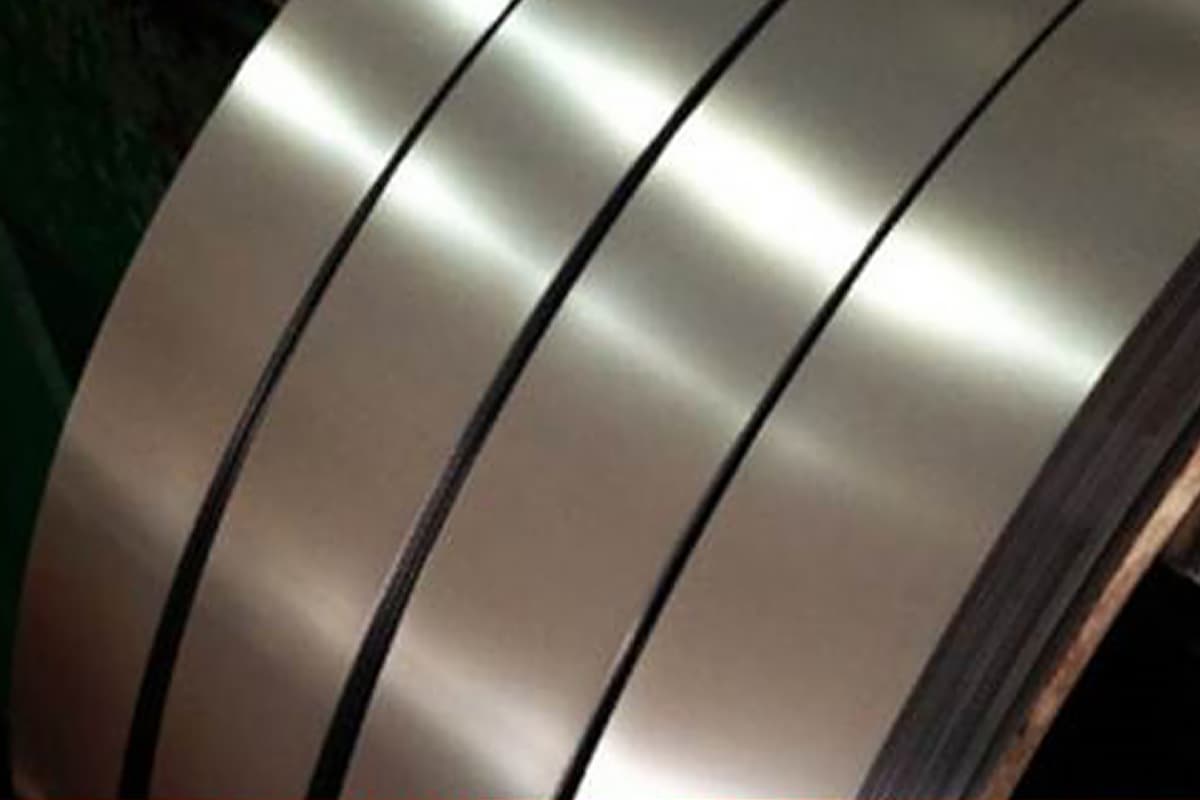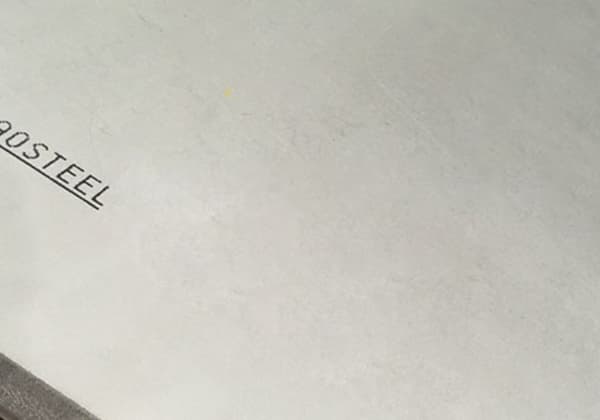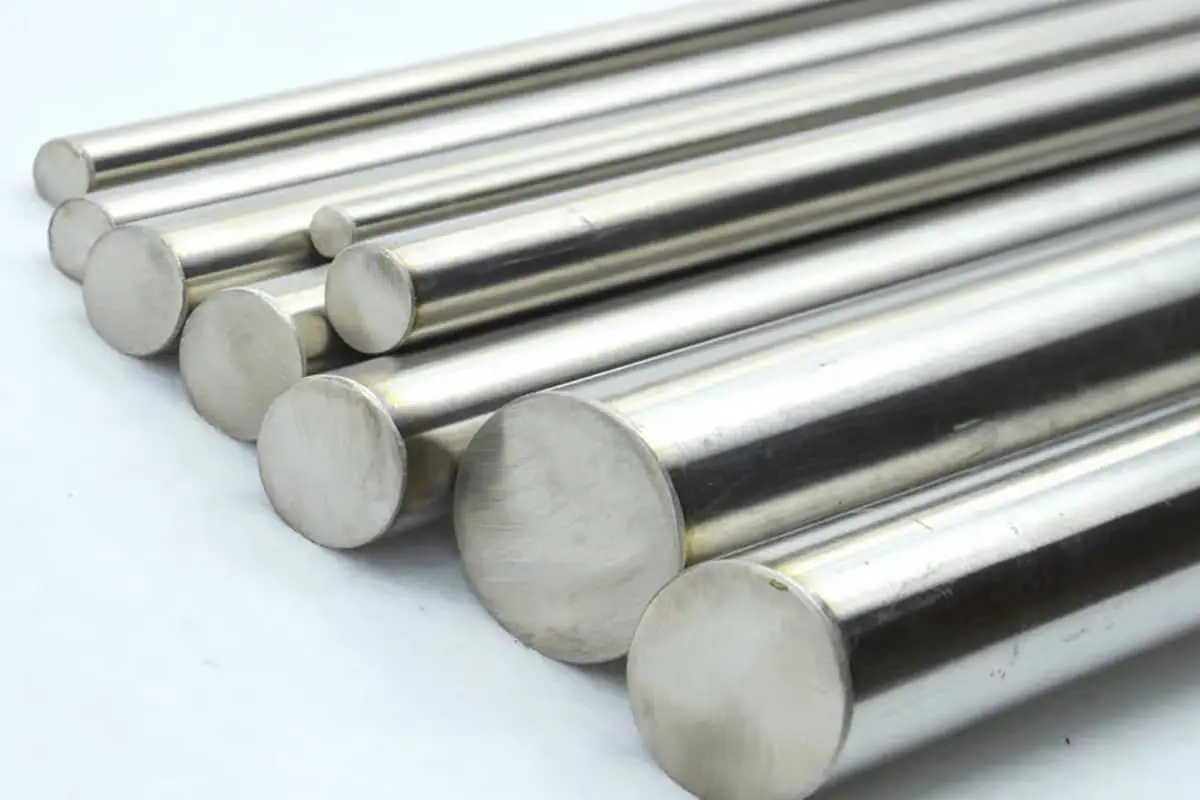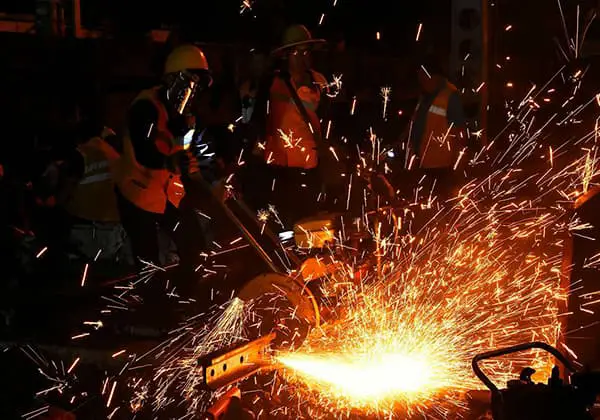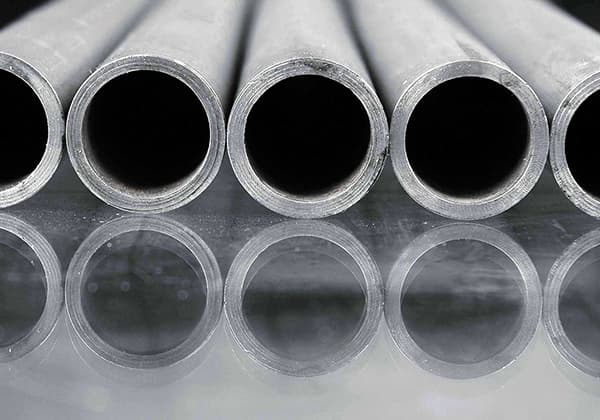
Have you ever wondered about the different types of stainless steel and their applications? In this blog post, we’ll dive into the world of stainless steel grades, exploring their unique characteristics and uses. Our expert mechanical engineer will guide you through the complexities, providing insights to help you select the perfect grade for your needs. Get ready to expand your knowledge and discover the fascinating world of stainless steel!
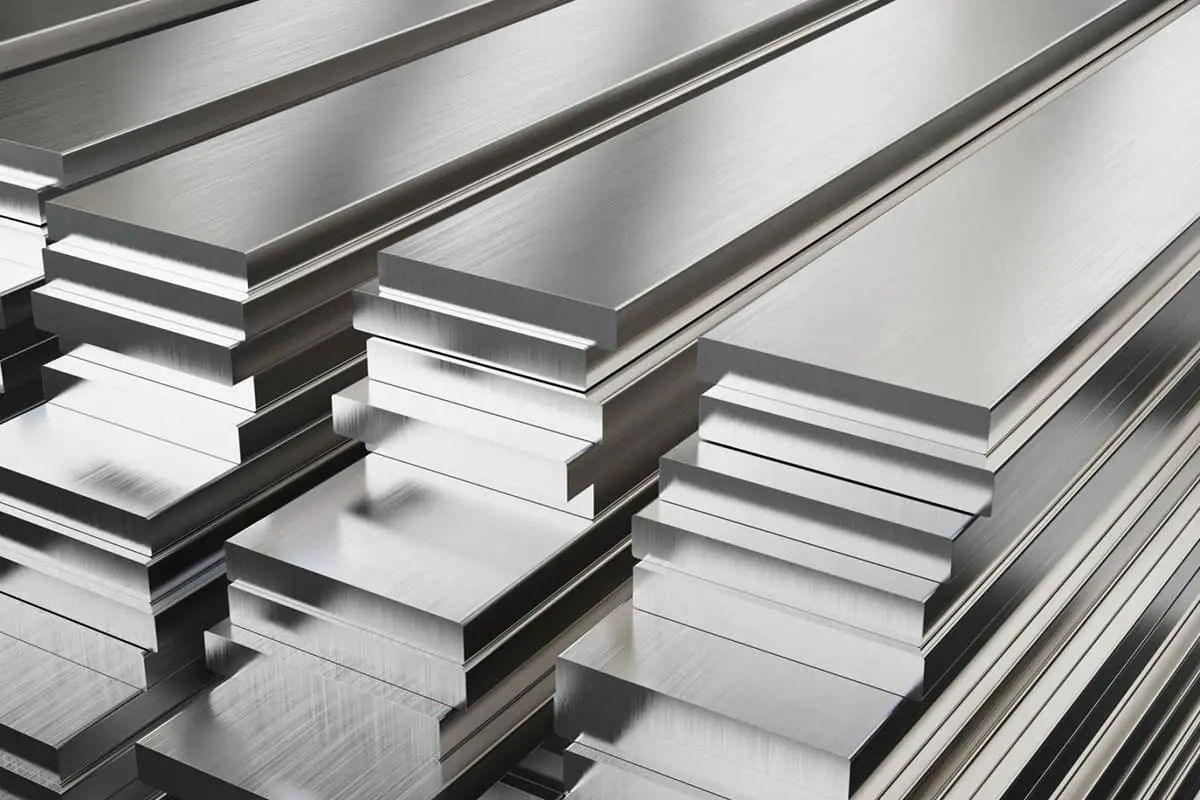
The following information provides a comprehensive understanding of the different grades of stainless steel, enabling you to make an informed decision for your specific application.
Currently, grades 304 and 316 are the most widely utilized austenitic stainless steels in industrial applications. These grades offer an exceptional balance of corrosion resistance, formability, and mechanical properties, making them suitable for a wide range of manufacturing processes.
Grade 304, commonly referred to as 18/8 stainless steel, contains approximately 18% chromium and 8% nickel. It exhibits excellent corrosion resistance in various environments and is extensively used in food processing equipment, kitchen appliances, and architectural applications. The low-carbon variant, Grade 304L, offers enhanced weldability and superior resistance to intergranular corrosion, particularly beneficial in welded structures or components subject to high-temperature service.
Grade 316 incorporates molybdenum (typically 2-3%), which significantly enhances its corrosion resistance, particularly against chlorides and other aggressive chemicals. This characteristic makes it ideal for marine environments, chemical processing equipment, and pharmaceutical industries. The 316L variant, with its lower carbon content (≤0.03%), provides improved weldability and resistance to sensitization during welding or high-temperature service, crucial for maintaining structural integrity in demanding applications.
From a cost perspective, 304 stainless steel is generally 20-30% less expensive than 316 stainless steel due to its lower alloy content. However, the long-term durability and reduced maintenance requirements of 316 in more aggressive environments often justify its higher initial cost. A comprehensive life-cycle cost analysis, considering factors such as replacement frequency and downtime, can provide a more accurate comparison.
When selecting the appropriate type of stainless steel, consider the following critical factors:

This following table summarizes the different series of stainless steel and their specific types, along with their key characteristics and typical applications.
| Series | Stainless Steel Type | Characteristics and Applications |
|---|---|---|
| 200 | General | Contains chrome, nickel, manganese; austenitic stainless steel. |
| 300 | General | Contains chrome, nickel; austenitic stainless steel. |
| 301 | Specific | Good malleability, quickly hardened, good weldability, superior abrasion resistance and fatigue strength to 304. |
| 302 | Specific | Same corrosion resistance as 304, higher strength due to high carbon content. |
| 303 | Specific | Easier machining than 304, small amounts of sulfur and phosphorus added. |
| 304 | Specific | General model, 18/8 stainless steel, GB grade 0Cr18Ni9. |
| 309 | Specific | Better temperature resistance than 304. |
| 316 | Specific | Used in food industry and surgical equipment, anti-corrosive, better anti-chloride corrosion resistance, “Marine steel”, used in nuclear fuel recovery. |
| 321 | Specific | Reduced corrosion risk at weld joints due to titanium, similar to 304. |
| 400 | General | Ferritic and martensitic stainless steel. |
| 408 | Specific | Good heat resistance, weak corrosion resistance, 11% Cr, 8% Ni. |
| 409 | Specific | Cheap, used as car exhaust pipe, ferritic (chrome steel). |
| 410 | Specific | Martensitic (high-strength chromium steel), good wear resistance, poor corrosion resistance. |
| 416 | Specific | Improved processing properties due to added sulfur. |
| 420 | Specific | “Blade grade” martensitic steel, used for surgical tools, very bright. |
| 430 | Specific | Ferritic, decorative use, good forming property, poor temperature endurance and corrosion resistance. |
| 440 | Specific | Used for razor blades, models: 440A, 440B, 440C, 440F (easily processed). |
| 500 | General | Heat-resistant chromium alloy steel. |
| 600 | General | Martensite precipitation hardening stainless steel. |
| 630 | Specific | Common precipitation hardened type, 17-4; 17% Cr, 4% Ni. |
Stainless steel can be classified based on various criteria, including chemical composition, properties, application, functional characteristics, and metallographic structure. This comprehensive classification system helps in selecting the most appropriate stainless steel grade for specific industrial applications.
Chemical Composition:
Properties and Application:
Functional Characteristics:
Metallographic Structure:
Understanding these classifications is crucial for engineers and manufacturers to select the most suitable stainless steel grade based on specific requirements such as corrosion resistance, mechanical properties, formability, weldability, and cost-effectiveness. The choice of stainless steel type significantly impacts the performance, longevity, and overall success of industrial applications across various sectors, including chemical processing, food and beverage, aerospace, and marine industries.
Comparison of mechanical properties of stainless steel
| Classification | Composition (%) | Hardenability | Corrosion-resistance | Machinability | Weldability | Magnetism | ||
|---|---|---|---|---|---|---|---|---|
| C | Cr | Ni | ||||||
| ferrite | <0.35 | 16 | 27 | / | Good | Good | Good | has |
| martensite | <1.20 | 11 | 15 | Self-hardening | has | has | bad | has |
| austenite | <0.25 | >16 | 7 | / | Good | Good | Good | / |
The above classification only considers the matrix structure.
In addition to the three basic types of stainless steel, it also includes composite stainless steel, such as martensite-ferrite and austenite-ferrite, as well as precipitation-hardening stainless steel, such as martensite-carbide stainless steel.
This table below provides a concise overview of each type of steel, highlighting their main features, examples, and typical applications.
| Type of S.S | Key Characteristics | Examples | Uses |
|---|---|---|---|
| Ferritic Steel | – Low-carbon chromium stainless steel. – Chromium content > 14%. – Contains elements like Mo, Ti, Nb, Si, Al, W, V. – Dominantly ferrite-forming elements. – Corrosion-resistant and oxidation-resistant. – Poor mechanical properties and processability. | Cr17, Cr17Mo2Ti, Cr25, Cr25Mo3Ti, Cr28 | Anti-acid structures, antioxidant steel. |
| Ferrite-Martensitic Steel | – In Y+A or δ phase at high temperatures. – Transforms to Y-M phase in cold conditions. – Consists of ferrite and martensite. – Ferrite amount varies. – Chromium content typically between 12-18%. – Partial hardening possible. | 0Cr13, 1Cr13, 2Cr13, Cr17Ni2, Cr17W4, Cr11MoV, etc. | Various applications, depends on specific grade. |
| Martensitic Steel | – In Y phase at quenching temperatures. – Transforms into martensite upon cooling. – Similar properties to ferritic-martensitic steel but higher mechanical performance. – No free ferrite in the structure. | 2Cr13, 2Cr13Ni2, 3Cr13, 13Cr14NiWVBA, etc. | Various applications similar to ferritic-martensitic steel. |
| Martensite-Carbide Steel | – High carbon content Fe-C alloy. – Contains 12% or more chromium. – Heated at normal quenching temperature. – Hardened structure of martensite and carbide. – Corrosion resistance equivalent to 12-14% chromium stainless steel. | 4Cr13, 9Cr18, 9Cr18MoV, 9Cr17MoVCo | Cutting tools, bearings, springs, medical instruments. |
| Austenitic Steel | – High concentration of stabilizing elements. – Broad Y-phase zone at high temperatures. – Austenitic structure at normal temperatures. – Can be strengthened by cold deformation. – Susceptible to intercrystalline and stress corrosion. | 18-8, 18-12, 25-20, 20-25Mo, Cr18Mn10Ni5, etc. | Various industrial applications, benefits from strain hardening. |
| Austenitic-Ferritic Steel | – Limited stable austenite elements. – Austenitic-ferritic phase state. – Composition and amount of ferrite varies. – Higher yield strength compared to pure austenitic steel. – Less susceptible to stress corrosion and hot cracking during welding. – Poor pressure processing performance and high susceptibility to pitting corrosion. | Various chromium-manganese stainless steels | Industries requiring high yield strength and corrosion resistance. |
| Austenite-Martensitic Steel | – Ms point lower than room temperature. – Forms austenite after solid solution treatment. – Transforms to martensite during cooling or heating processes. – High strength but lower corrosion resistance than standard austenitic steel. – Developed in the 1950s, known as half austenitic precipitation-hardening stainless steel. | 17Cr-7Ni-A1, 15Cr-9Ni-A1, 17Cr-5Ni-Mo, etc. | Aviation, rocket missile industries; not widely used in machinery manufacturing. Ultra-high strength steel. |
Low-carbon chromium stainless steel with a chromium content of more than 14%, chromium stainless steel with a chromium content of 27% and above, and with additional elements such as molybdenum, titanium, niobium, silicon, aluminum, tungsten, and vanadium.
In the chemical composition, elements that form ferrite hold a dominant position, and the matrix structure is primarily iron-based.
This type of steel is known as ferritic, with a quenched (solid solution) form, and small amounts of carbide and intermetallic compounds can be observed in the structures of annealing and aging.
Examples of such steels include Cr17, Cr17Mo2Ti, Cr25, Cr25Mo3Ti, and Cr28.
Ferritic stainless steel is relatively corrosion-resistant and oxidation-resistant due to its high chromium content, but it has poor mechanical properties and processability.
It is mostly used in anti-acid structures and as an antioxidant steel.
This type of steel is in the Y+A (or δ) phase at high temperatures, and transforms to the Y-M phase when it approaches cold conditions.
It retains ferrite and exists as martensite and ferrite at normal temperatures.
The amount of ferrite in the structure can vary from a few percent to several tens percent, depending on the composition and heating temperature.
Examples of this type of steel include 0Cr13, 1Cr13, 2Cr13 with chromium near the upper limit and carbon near the lower limit, Cr17Ni2 steel, Cr17W4 steel, as well as many modified 12% chromium hot-strength steels based on 1Cr13 (which are also known as heat-resistant stainless steels), such as Cr11MoV, Cr12WMoV, Cr12W4MoV, 18Cr12WMoVNb, etc.
Ferritic-martensitic steel can exhibit partial hardening and obtain mechanical properties, but these are greatly influenced by the content and distribution of ferrite.
The chromium content in this type of steel is typically between 12-14% and 15-18%.
The former has the ability to resist atmospheric and weak corrosive media, and has good damping and a small linear expansion coefficient.
The latter type has comparable corrosion resistance to ferritic acid steel with the same chromium content, but still retains some of the disadvantages of high chromium ferritic steel.
Under normal quenching temperatures, martensitic steel is in the Y phase, but this phase only remains stable at high temperatures. The M phase is commonly stable around 300℃ and transforms into martensite upon cooling.
This type of steel includes 2Cr13, 2Cr13Ni2, 3Cr13, and some modified 12% chromium hot-strengthened steel, such as 13Cr14NiWVBA and Cr11Ni2MoWVB steel.
The mechanical properties, corrosion resistance, process performance, and physical properties of martensitic stainless steel are similar to those of 2-14% chromium ferrite-martensitic stainless steel.
Because there is no free ferrite in the structure, its mechanical performance is higher than the aforementioned steel, but its thermal sensitivity to heat treatment is lower.
Fe-C alloy contains 0.83% carbon.
In stainless steel, the S points are shifted to the left due to chromium. Steel with 12% chromium and 0.4% or more carbon, as well as steel with 18% chromium and 0.3% or more carbon, belong to hypereutectoid steel.
This type of steel is heated at normal quenching temperature, and the secondary carbide cannot be completely dissolved in austenite, so the hardened structure is composed of martensite and carbide.
There are not many grades of stainless steel that fall into this category, but some stainless steels with higher carbon, such as 4Cr13, 9Cr18, 9Cr18MoV, and 9Cr17MoVCo steel.
If quenched under low temperature, the 3Cr13 steel with carbon close to the upper limit may also have such a structure.
Due to its high carbon content, even though the above three grades of steel contain more chromium, their corrosion resistance is only equivalent to that of stainless steel with 12-14% chromium.
This type of steel is mainly used for parts that require high hardness and good wear resistance, such as cutting tools, bearings, springs, and medical instruments.
This type of steel has a high concentration of stabilizing elements and a broad Y-phase zone at high temperatures.
Upon cooling, the Ms point falls below room temperature, resulting in an austenitic structure at normal temperatures.
This category includes chrome-nickel stainless steel such as 18-8, 18-12, 25-20, and 20-25Mo, as well as low-nickel stainless steel that uses manganese instead of some nickel and nitrogen, including Cr18Mn10Ni5, Cr13Ni4Mn9, Cr17Ni4Mn9N, and Cr14Ni3Mn14Ti steel.
Austenitic stainless steel has many benefits, including the ability to be strengthened by cold deformation methods through strain hardening, despite poor heat treatment properties.
However, it is also susceptible to intercrystalline corrosion and stress corrosion, which can be mitigated through the use of alloy additives and process measures.
Due to the limited amount of stable austenite elements, the steel does not have a pure austenitic structure at room temperature or high temperatures, resulting in an austenitic-ferritic phase state. The composition and amount of ferrite can vary greatly depending on heating temperature.
Many types of stainless steel fall into this category, including low-carbon 18-8 nickel-chrome steel, 18-8 nickel-chrome steel with titanium, niobium, and molybdenum, with ferrite being particularly visible in the structure of cast steel.
Other examples include chromium-manganese stainless steel with more than 14-15% chromium and less than 0.2% carbon (such as Cr17Mn11) and most of the chromium-manganese-nitrogen stainless steel that have been studied and applied in industry.
Compared to pure austenitic stainless steel, this type of steel has several advantages, including higher yield strength, increased resistance to intergranular corrosion, reduced sensitivity to stress corrosion, lower tendency for hot cracking during welding, and good casting fluidity.
However, it also has several disadvantages, such as poor pressure processing performance, high susceptibility to pitting corrosion, and tendency to exhibit c-phase brittleness and weak magnetism under strong magnetic field conditions.
These advantages and disadvantages are directly related to the presence of ferrite in the structure.
The Ms point of this steel is lower than room temperature, making it easy to form and weld for austenite after solid solution treatment.
Martensitic transformation can usually be achieved through two processes.
The second method provides better corrosion resistance, but the solid solution treatment and cryogenic interval time must not be too long, otherwise, the cold strengthening effect will be reduced due to the aging stability of the austenite.
After the treatment, an aging process at 400-500 degrees is performed to enhance the intermetallic compound.
Examples of steel grades that fall into this category include 17Cr-7Ni-A1, 15Cr-9Ni-A1, 17Cr-5Ni-Mo, and 15Cr-8Ni-Mo-A1.
Austenite-martensitic steel, also known as austenitic-maraging stainless steel, is a new type of stainless steel developed and applied starting in the 1950s.
It is also referred to as half austenitic precipitation-hardening stainless steel due to the presence of ferrite in addition to austenite and martensite in its structure.
These steels are characterized by their high strength (C can reach 100-150) and good heat strengthening performance, but their corrosion resistance is lower than that of standard austenitic stainless steel due to the low chromium content and chromium carbide precipitation during heat treatment.
The high strength is obtained by sacrificing some of the corrosion resistance and other properties, such as non-magnetism.
Austenite-martensitic steel is primarily used in the aviation and rocket missile industries, but is not widely used in machinery manufacturing and is sometimes classified as a type of ultra-high strength steel.
Stainless steel is a versatile material utilized extensively in various industrial applications due to its exceptional properties. Below are detailed explanations of the most common types of stainless steel and nickel alloys, along with examples and data points demonstrating their applications and benefits.
Below are answers to some frequently asked questions:
When selecting the best type of stainless steel for industrial applications, it is essential to consider factors such as corrosion resistance, mechanical properties, formability, and cost. The most commonly used types of stainless steel in industrial settings are austenitic grades like 304 and 316.
Grade 304 is widely used due to its excellent corrosion resistance, good tensile strength, and high formability. It contains about 18% chromium and 8% nickel, making it suitable for a wide range of applications, including food processing equipment, chemical processing, and architectural components. However, it is less resistant to pitting in high chloride environments.
Grade 304L is a low-carbon variant of 304, which improves weldability by reducing the risk of sensitization during welding. This makes it ideal for thicker parts that are not post-weld annealed, maintaining the same corrosion resistance and formability as 304.
Grade 316 offers enhanced corrosion resistance due to the addition of 2-3% molybdenum, making it suitable for applications exposed to chlorides, such as marine environments, chemical processing, and pharmaceutical manufacturing. It provides better resistance to pitting and crevice corrosion compared to 304 and retains its properties at elevated temperatures.
Grade 316L, similar to 304L, is a low-carbon variant of 316. It reduces the risk of sensitization during welding and is used for thicker parts that are not post-weld annealed while maintaining the same corrosion resistance and mechanical properties as 316.
While ferritic stainless steels like Grade 430 offer good corrosion resistance and are cost-effective, they are generally less formable than austenitic steels and may not be suitable for more demanding industrial applications.
Martensitic stainless steels are tougher but less formable and are often used in applications requiring high strength and hardness, such as cutlery and automotive parts. However, their brittleness and lower corrosion resistance make them less ideal for general industrial use.
Duplex stainless steels combine the properties of austenitic and ferritic steels, offering higher strength and improved corrosion resistance, making them suitable for demanding applications. However, they are less commonly used than austenitic grades in general industrial settings.
In summary, for most industrial applications, Grade 304 or Grade 316 austenitic stainless steels are typically the best choices due to their excellent corrosion resistance, mechanical properties, and formability. The specific choice between these grades depends on the specific requirements of the application, particularly the level of corrosion resistance needed.
When choosing between different brands of stainless steel products, several factors need to be considered to ensure you select a high-quality and suitable product for your specific needs. First, pay attention to the material quality and grade. High-grade stainless steel, such as 18/8 or 18/10 from the 300 series, is preferable due to its superior corrosion resistance and durability, thanks to higher chromium and nickel content. Lower grades, like 18/0 or those in the 200 series, might be less expensive but often offer reduced corrosion resistance and overall quality.
For cookware, consider the construction and ply. Multi-ply cookware with layers of conductive metals like aluminum sandwiched between stainless steel layers provides better heat distribution and durability. Ensure the product is compatible with your cooking methods, such as induction, oven, and stovetop use.
Durability and longevity are critical. High-quality stainless steel products are known for their robust construction and long-lasting performance. Look for brands that emphasize the use of high-grade materials and solid construction techniques.
Stainless steel is non-reactive, meaning it won’t impart metallic flavors to food. High-grade stainless steel like 18/10 is particularly resistant to corrosion and rust, making it ideal for cooking acidic foods.
If the product involves welding or heat treatment, ensure the stainless steel grade used is appropriate. Austenitic grades like 304 are highly weldable and resistant to cracking and corrosion. Also, consider the operating environment. For marine or chemical applications, Type 316 stainless steel, which contains molybdenum, offers better resistance to chloride ions.
While functionality is paramount, aesthetic and functional considerations such as color, finish, and design should not be overlooked. Some brands offer superior finishing options that enhance both the appearance and durability of the product.
Research the brand’s reputation by reading customer reviews and looking for certifications or endorsements that indicate a commitment to quality and safety. Finally, consider your budget. While high-quality stainless steel products can be more expensive, they generally offer better performance and longevity. Balance your budget with the quality and features you need to make an informed decision.
When buying stainless steel materials, several key factors need to be considered to ensure the selection meets the specific needs of your project. The operating environment and corrosion resistance are crucial; factors like temperature, pH levels, and exposure to corrosive elements should be evaluated. Grades such as 304 and 316, known for their high chromium and molybdenum content, offer excellent corrosion resistance and are suitable for harsh environments like marine and chemical processing applications.
Grade selection is important due to varying properties among different grades. Austenitic grades like 304 and 316 are well-regarded for their balanced cost, fabrication ability, and corrosion resistance. Ferritic grades are often used in food service and medical environments due to their lower cost and ferritic structure. Martensitic grades offer high strength but are generally not suitable for welding. Precipitation hardened grades, such as 17-4 PH, are used in high-strength applications like aerospace and defense.
Welding requirements must be considered, as not all grades are weldable. Austenitic grades like 304L and 347, and ferritic grades like 430 and 439, are more suitable for welding, whereas martensitic grades can present issues such as intergranular corrosion and hot cracking.
Machining and formability are also critical. Grades like 303 and 416, which contain sulfur, are easier to machine. Austenitic grades like 304 and ferritic grades like 430 offer good formability, while martensitic grades are generally less formable and more brittle.
If the material will be subjected to heat, choosing a grade that can withstand high temperatures without compromising its properties is essential. Heat-treatable grades include 440C and 17-4 PH.
The mechanical properties, including strength, ductility, and toughness, must align with the application requirements. Austenitic grades typically offer high ductility and toughness, while martensitic and precipitation-hardened grades provide high strength.
The finish of the stainless steel impacts both appearance and maintenance. Mirror finishes may look impressive but require more maintenance, whereas finishes like pickled or electropolished may be more practical for high-traffic areas.
Cost-effectiveness and availability are also important. Higher-quality grades may be more expensive upfront but can reduce maintenance and replacement costs over time. Ensuring the chosen grade is available from a reputable supplier is crucial.
Lastly, consider customer preferences and regulatory compliance. Certain industries may require specific finishes or certifications, so it’s important to meet any aesthetic preferences and regulatory requirements of the end-users.
By evaluating these factors carefully, you can select the most appropriate stainless steel material for your specific application, ensuring optimal performance, durability, and cost-effectiveness.


